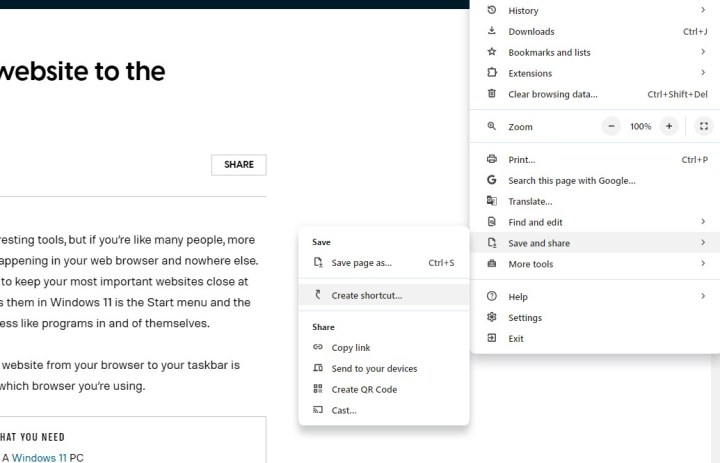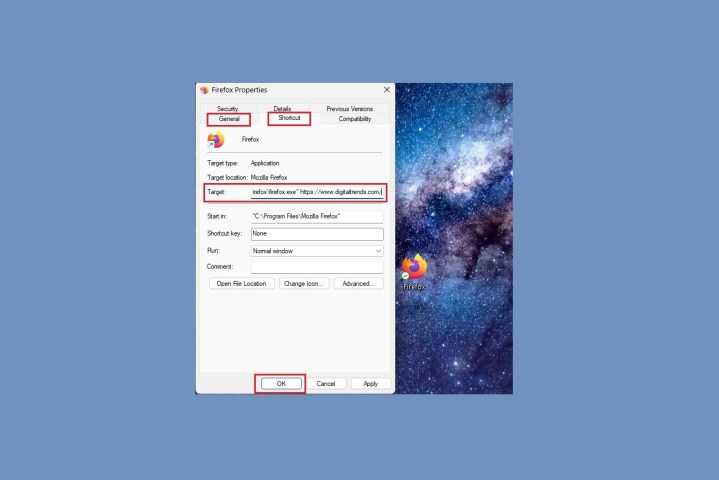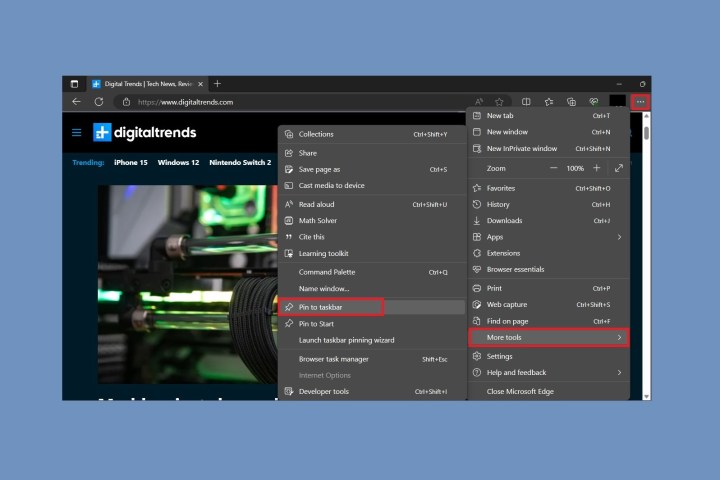Windows includes many interesting tools, but if you’re like many people, more and more of your digital life is happening in your web browser and nowhere else. That being the case, you’ll want to keep your most important websites close at hand. The easiest way to access them in Windows is the Start menu and the taskbar, treating them more or less like programs in and of themselves.
Although easy overall, getting a website from your browser to your taskbar is slightly different depending on which browser you’re using.
Google Chrome
Pinning your favorite website to your Windows taskbar only takes a few steps with Google Chrome. Here's how to do it:
Step 1: Open the Google Chrome browser and then go to your desired website.
Step 2: Select the Three dots icon in the top right corner. From the menu that pops up, choose Save and share.

Step 3: Select Create shortcut. In the Create shortcut? dialog box, tick the box next to Open as window and then select Create.
And that's it! The shortcut for your desired website should automatically appear on your taskbar and on your desktop.
Firefox
Unfortunately, Firefox doesn’t have an integrated way to pin shortcuts to the taskbar as Chrome does. However, there is a workaround.
But before we get into how to perform the workaround, there are few things you should know:
- The Firefox browser shortcut can't already have been pinned to your taskbar before you attempt to use the workaround method. The method won't work otherwise. If you have Firefox pinned to your taskbar, unpin it now.
- Don't have any Firefox browser windows open before you use this method.
- You'll need to name your new website shortcut manually. This method won't yield a result with a shortcut that is automatically named after the website you chose to pin.
Here's how to pin a website shortcut with Firefox:
Step 1: Use the Search bar on the Windows taskbar to search for Firefox. Once Firefox appears in the search results, right click on it.
Step 2: Then select Open file location. A Windows Explorer window will appear showing you the Firefox app's location. In this window, right-click on Firefox.
In the menu that appears, choose Show more options. Then select Create shortcut > Yes.
Step 3: A new Firefox shortcut will appear on your desktop. Right-click on this icon and then choose Properties.

Step 4: On the Firefox properties screen, choose the General tab and rename the shortcut in the text box at the top of this tab.
Then select the Shortcut tab, and in the Target section, navigate to the end of the listed file location and press the Spacebar once, and then type in the URL for your favorite website. (It will look like this: "C:\Program Files\Mozilla Firefox\firefox.exe" https://www.digitaltrends.com/)
Then select OK.
Step 5: The edited shortcut should appear on your desktop. Right-click on this shortcut then select Show more options > Pin to taskbar.
Microsoft Edge
You can also pin websites to your Windows taskbar with Microsoft Edge. Here's how you can set that up:
Step 1: Open one of your favorite websites in Microsoft Edge.
Step 2: Select the Three dot menu icon in the top right corner of your screen.
Step 3: From the menu that appears, select More tools.

Step 4: Then select Pin to taskbar.
A shortcut for that website will then automatically appear on your Windows taskbar.
It’s as simple as that. You have just learned how to pin a website to your taskbar so you can find it instantly, and we’ve given you an overview of our favorite Internet browsers. We have dedicated various articles to help you understand the ins and outs of Internet navigation, including our picks for best browsers and safety precautions to take to stay anonymous online.
Editors' Recommendations
- How to keep your laptop battery healthy and extend its life
- The most common Zoom problems and how to fix them
- How to delete Google Chrome on Windows and Mac
- How to mass-delete all your emails on Gmail at once
- How to open RAR files on Windows and Mac




